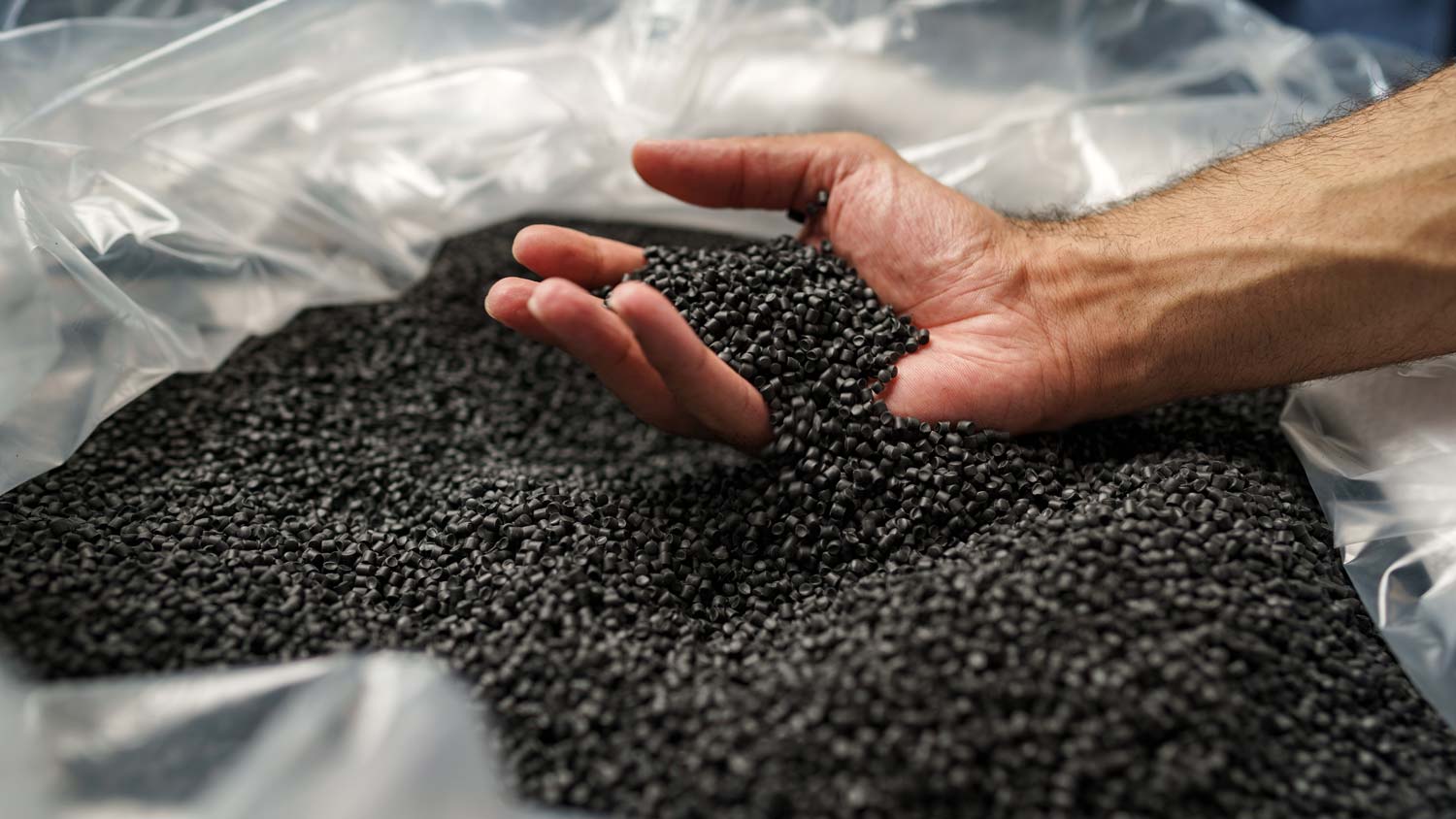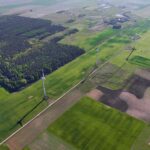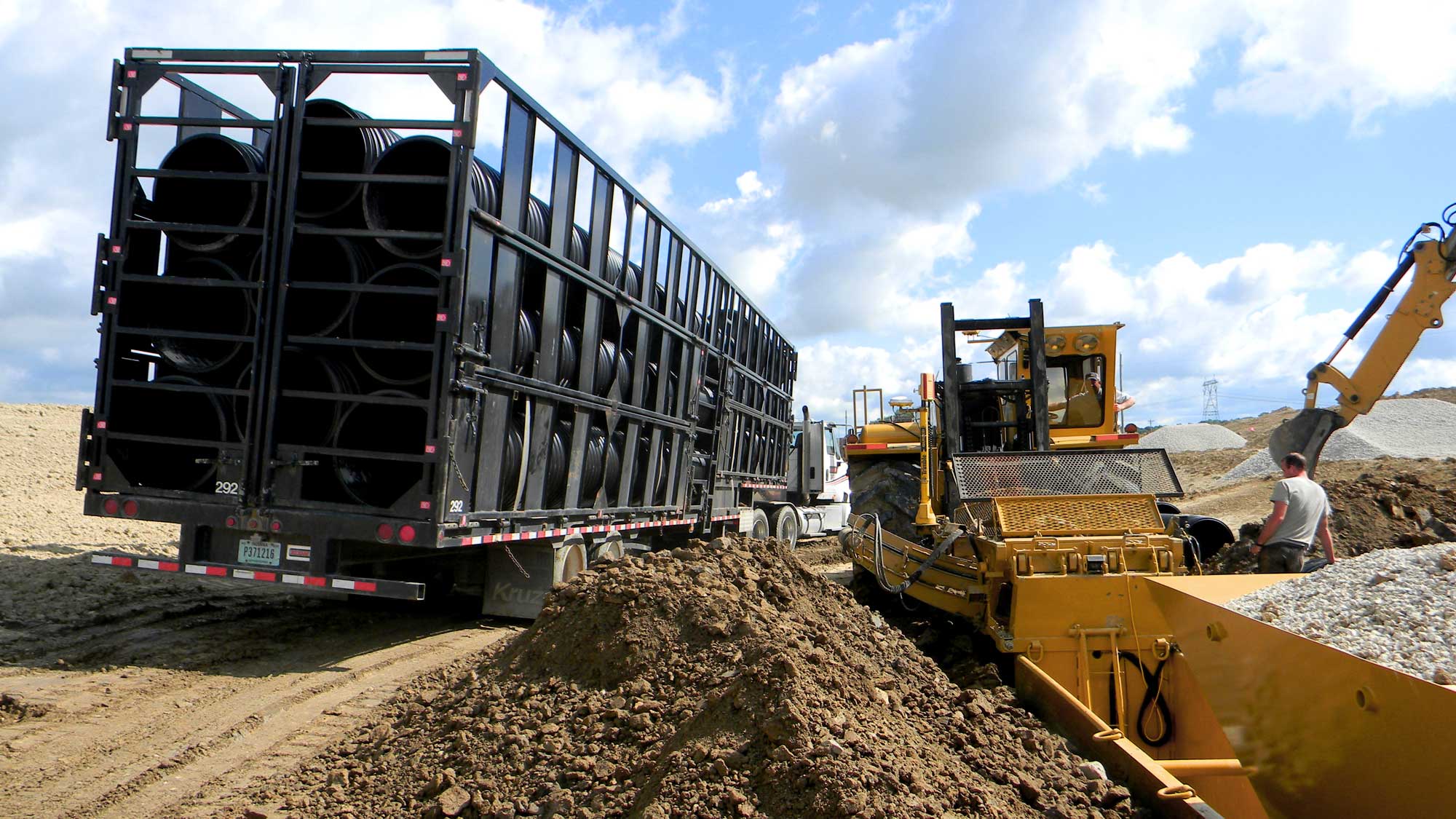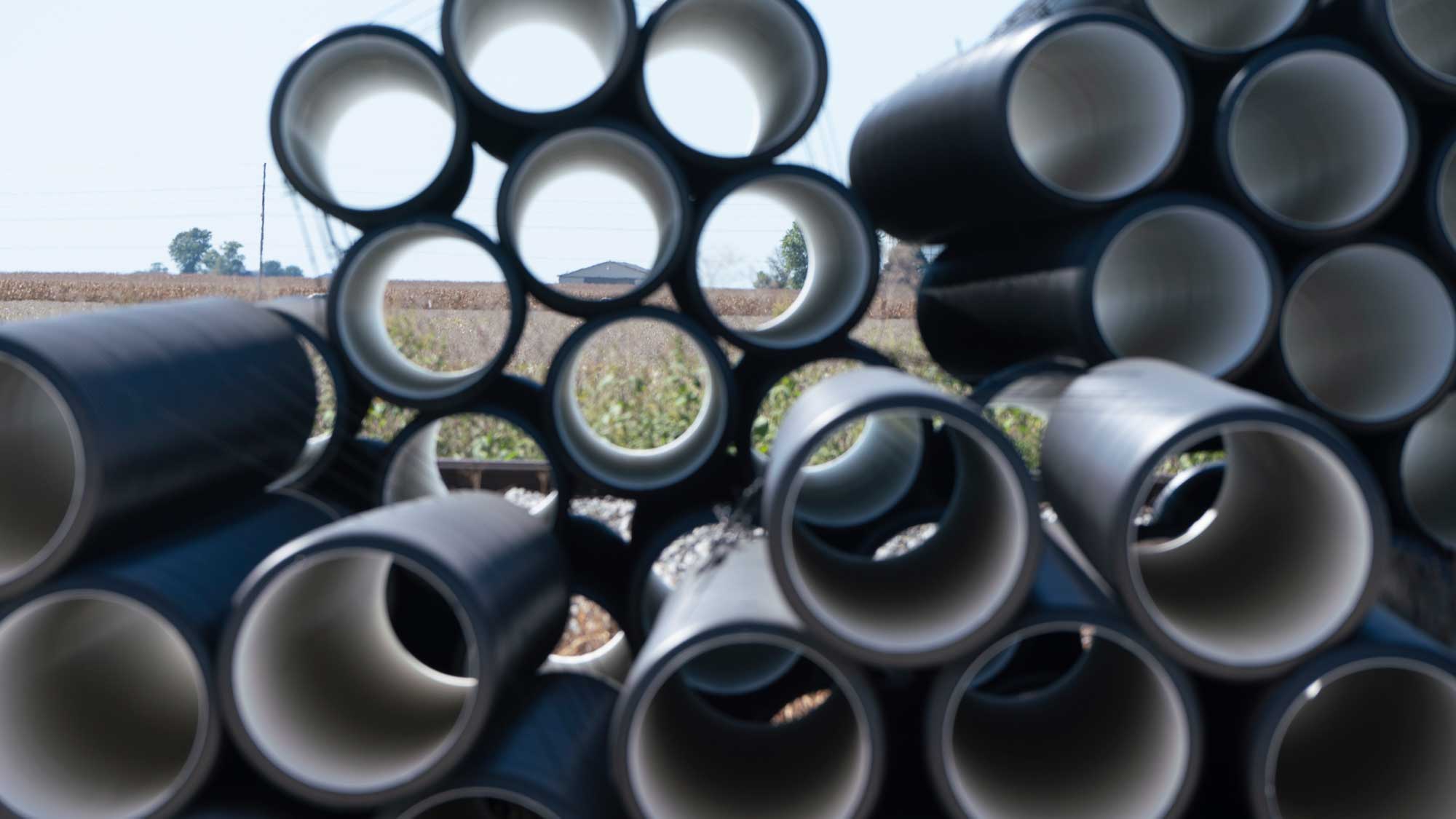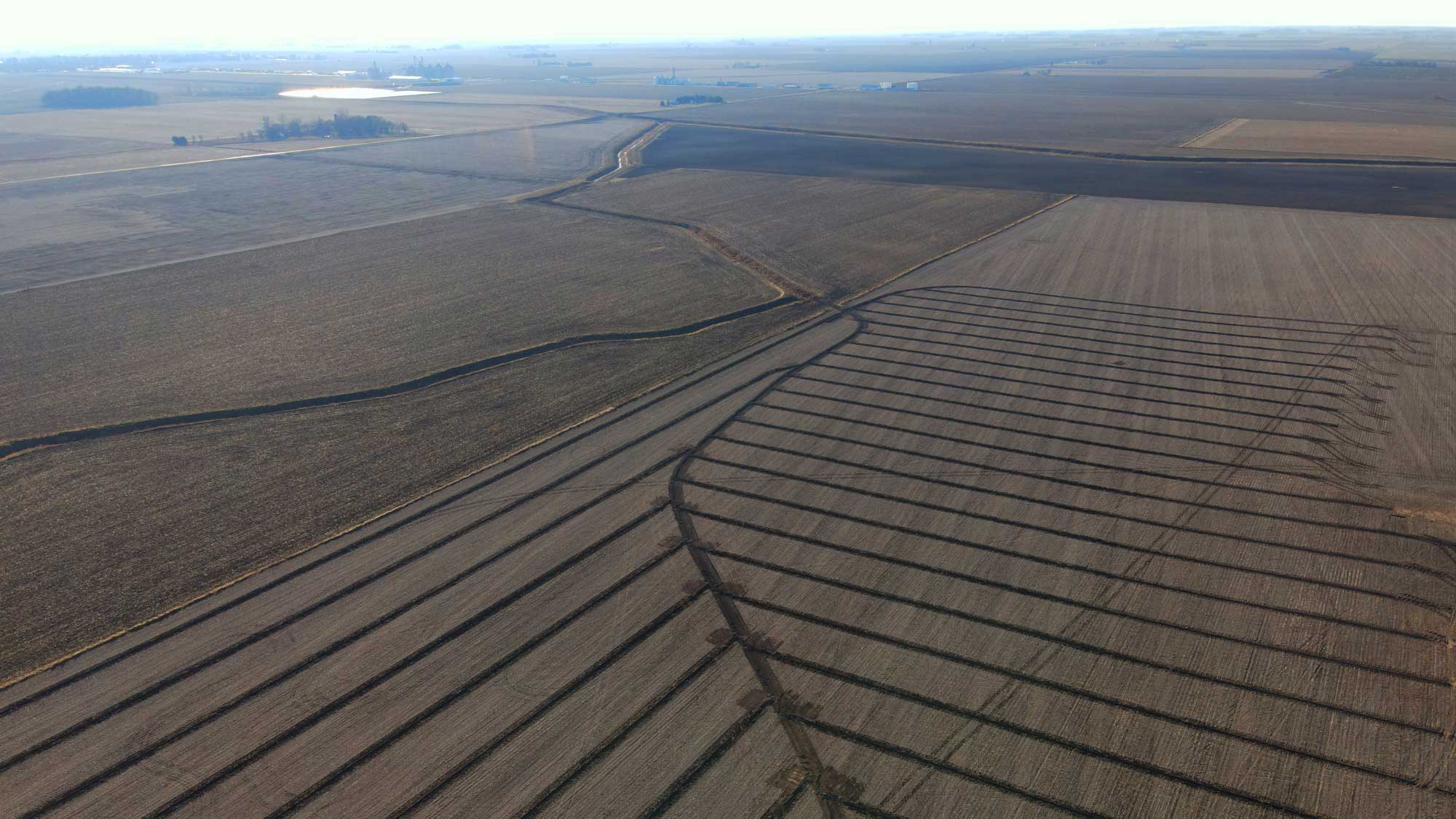As seen in the Tried & True Spring 2024 issue
At the heart of Fratco’s advanced corrugated drainage pipe lies the intricate chemistry and sophisticated makeup of high-density polyethylene (HDPE) and high-density polypropylene (HDPP). These materials are not just plastics; they are marvels of modern chemical engineering, tailored to meet the rigorous demands of many products including drainage infrastructure.
Where does Plastic come from?
Plastic is everywhere today! The term “plastic” refers to any material made of polymers, large molecules made of the same unit. Most plastics we refer to are completely man-made. Today, the majority of plastics, except for bioplastics, are created from crude oil drilled from underground. Then the oil is refined by heating it in a furnace at around 752°F (400°C). Heating the oil separates its core components, allowing engineers to extract ethane and propane to begin building plastic. Then these components are broken up into smaller molecules like ethylene and propylene. It’s these components that then go through a polymerization process–where the molecules are combined–to create the physical polymers that become what we call plastic. Finally, the polymers undergo a pelletizing process, creating the pellets that Fratco and other plastic manufacturers mold into the plastic product.



HDPE: Polyethylene
HDPE stands as the most prevalent plastic, making up over a third of the global plastic market. This polymer consists of numerous repeating ethylene units, with its molecular formula and makeup being (C2H4)n.
A unique feature of HDPE is its relatively minimal branching compared to other polyethylene types, contributing to its distinct properties.
Let’s Break it Down:
- HDPE is a thermoplastic, meaning it can be melted and reshaped.
- It’s created by joining together ethylene molecules, which come from petroleum.
- The molecules are arranged in a straight line with very few side branches, making it very dense.
- This arrangement makes HDPE very strong and tough, able to withstand heavy use.
- It has a high strength-to-density ratio, meaning it’s strong even while staying relatively light.
- HDPE is great at resisting damage from environmental factors like stress cracking.
HDPE’s ability to stay flexible and resilient make it a common choice for many products even outside of drain pipe.” We often find it in shampoo bottles, toys, chemical containers, plastic bags and milk jugs. Milk jugs and large drink bottles are a great example to show off the strength and flexibility of HDPE, as they hold large, heavy quantities of liquid.
HDPP: Polypropylene
High-density polypropylene (HDPP) is widely used and known for its strength and durability. This plastic is made by linking together propylene molecules, which are derived from petroleum, similar to HDPE. Its chemical structure is represented as (C3H6)n.
Let’s Break it Down:
- HDPP is a thermoplastic, just like HDPE, which means it can also be melted down and reshaped.
- It’s formed by connecting propylene monomers, another product from petroleum.
- The arrangement of its molecules is typically in a straight line with a specific orientation, known as isotactic polypropylene. This setup gives HDPP a higher degree of firmness and crystallinity.
- This molecular structure makes HDPP very strong, resistant to physical impacts, and able to handle higher temperatures better than many plastics.
- It’s also known for being tough but lightweight, offering a balance between strength and ease of handling.
- HDPP stands out for its resistance to various chemicals, including solvents, bases and acids.
- It’s particularly good at resisting wear and tear from repeated bending or flexing, which is known as fatigue resistance.
You’ll often find HDPP in everyday items like furniture, luggage and Tupperware™, as well as in automotive parts such as bumpers and interior linings. Its combination of strength, flexibility and resistance to chemicals makes it a versatile choice for many applications.
Innovations in Material Science
Fratco’s commitment to innovation and sustainability is evident in the continuous exploration of advanced additives and blending techniques. The flexibility, strength-to-density ratios and simple recycling process give plastic pipe a unique advantage over other materials like concrete or metal. It’s innovations like these that can continue to enhance the resistance of HDPE and HDPP, improving their resilience and even extending their lifespan under challenging soil conditions.
The journey from crude oil to drainage pipe encapsulates a remarkable narrative of innovation, emphasizing not only the technical prowess required to manufacture these materials but also Fratco’s dedication to sustainability through recyclable materials. HDPE and HDPP’s inherent properties—strength, flexibility and resistance to environmental stressors—make them ideal for the challenges of modern drainage systems. By continually advancing material science and embracing recycling, Fratco not only contributes to the longevity and efficiency of drainage infrastructure but also demonstrates a commitment to environmental stewardship. This dedication ensures that Fratco’s products not only meet the current needs of the drainage industry but also pave the way for a more sustainable and resilient future.
What about recycling?
Plastic is designed to last, while that’s great for drainage pipe, it’s not great for products that are designed to be one use and disposed of. That’s where recycling comes into play. At Fratco, we try to implement recycled materials wherever we can. Remember, when everyone does their small part to recycle, it can make a huge impact!
Sources: Omnexus SpecialChem, Plascon Plastics, TedEd






